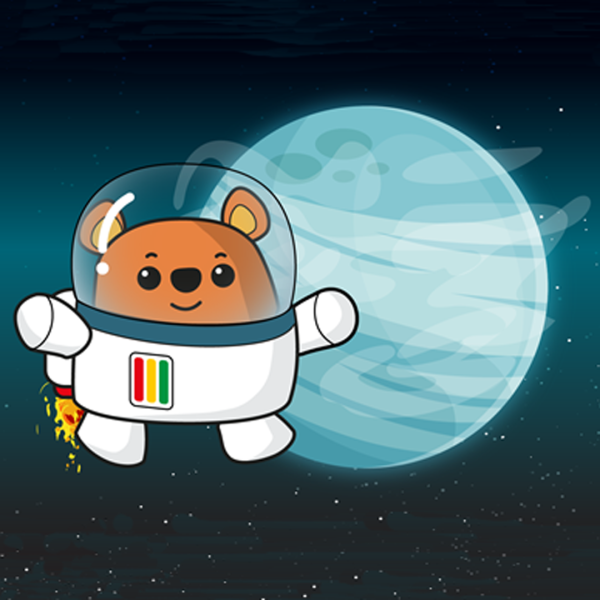Discover what to see in the night sky in February 2023, including planetary conjunctions and a rarely seen lunar impact basin.
Top 3 things to see in the night sky in February
-
Throughout the month – look out for the Hyades star cluster in Taurus.
-
Throughout the month - have a heart-to-heart with the Heart Nebula in Monoceros.
-
22 Feb – spot Venus, the Moon and Jupiter huddle together in the evening sky.
(Details given are for London and may vary for other parts of the UK)
See March's night sky highlights
Look Up! Podcast
Subscribe and listen to the Royal Observatory Greenwich's podcast Look Up! As well as taking you through what to see in the night sky each month, Royal Observatory Greenwich astronomers pick two space news stories to talk about.
In February's episode, which is available below, we talk about black holes taking bites out of the same star over and over, and LauncherOne - the attempt to be the first orbital launch from the UK. At the start of February, you can join us on Twitter to vote on which story is your favourite in our poll (@ROGAstronomers).
Our podcast is available on iTunes and SoundCloud.
Comet C/2022 E3 (ZTF)
We mentioned Comet C/2022 E3 (ZTF) last month and so far, it has behaved as expected. Hopefully it will keep getting brighter as it reaches its nearest point to the Earth on 1 February, and it might even be visible to the naked eye from dark sky areas.
You don’t want to wait for too long though as the comet will dim over the month, and the time that it will be up in the sky during the night will get shorter and shorter. At the start of February, it will appear in the constellation of Camelopardalis and will move through Auriga and end up in Taurus at the end of February.
How to see Comet C/2022 E3 (ZTF)
The Weeping Sisters of the Hyades Star Cluster
Taurus is well known for hosting the Pleaides, but there is another open star cluster that is also located in this constellation. The Hyades cluster is one of the nearest open star clusters to the Earth.
Four of its brightest stars form a V shape that marks the bull’s face and are joined by the bright orange-red giant star Aldebaran that represents the eye of Taurus. The Hyades star cluster is best seen through binoculars that have a wide field of view so that you can take in the entire cluster, and you can expect to see around 100 stars in this way.
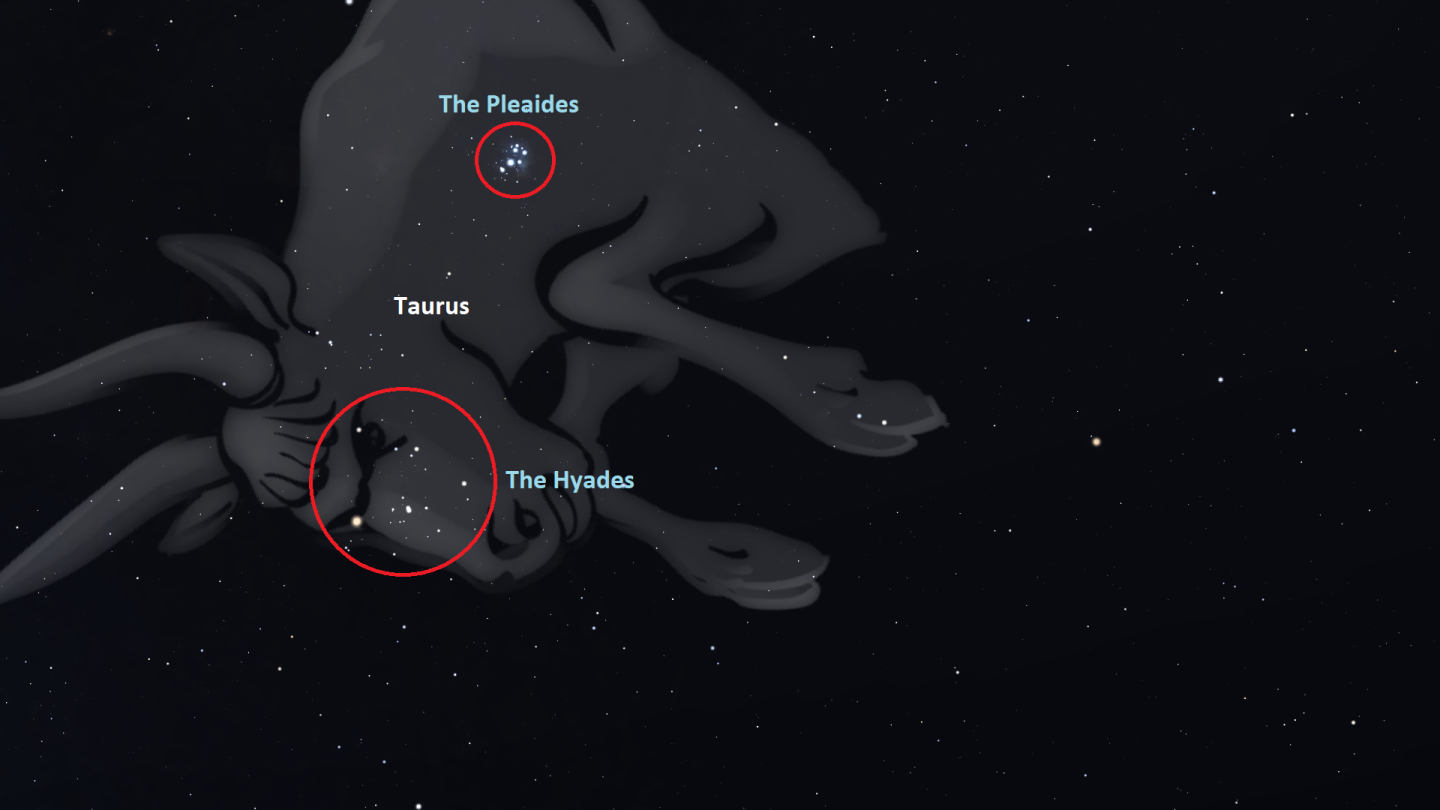
Glimpse the Moon's youngest impact basin, Mare Oriantale
The Moon is an excellent object to look at in any month, but some days are better than others to see certain features on the limb, or the visible edge, of the Moon.
The Moon is tidally locked to the Earth which is why we can only see one side of it. However, over the course of its orbit, we can see 59% of its surface. This is because of lunar libration – the Moon appears to rock from side to side and nod back and forth because of the tilt and shape of its orbit around the Earth.
A favourable time to see Mare Oriantale, which is found in the southwest limb of the Moon, is between 13-17 February. Mare Oriantale looks like a bullseye with its concentric circles, and is the Moon’s youngest and best-preserved impact basin.
Planetary Conjunctions - Mars, Venus, Neptune (and the Moon!)
The planets and the Moon are putting on a show this month with several conjunctions. First up is a close encounter between Venus and Neptune on 15 February.
Look towards the south west at around sunset and you will see Venus glinting brightly. You’ll need a telescope to see Neptune as it will be too dim, but be careful to not accidentally point it at the Sun if it’s still above the horizon!
A week later on 22 February, Venus, Jupiter and a very thin waxing crescent Moon will make a little triangle in the southwestern sky at around sunset too.
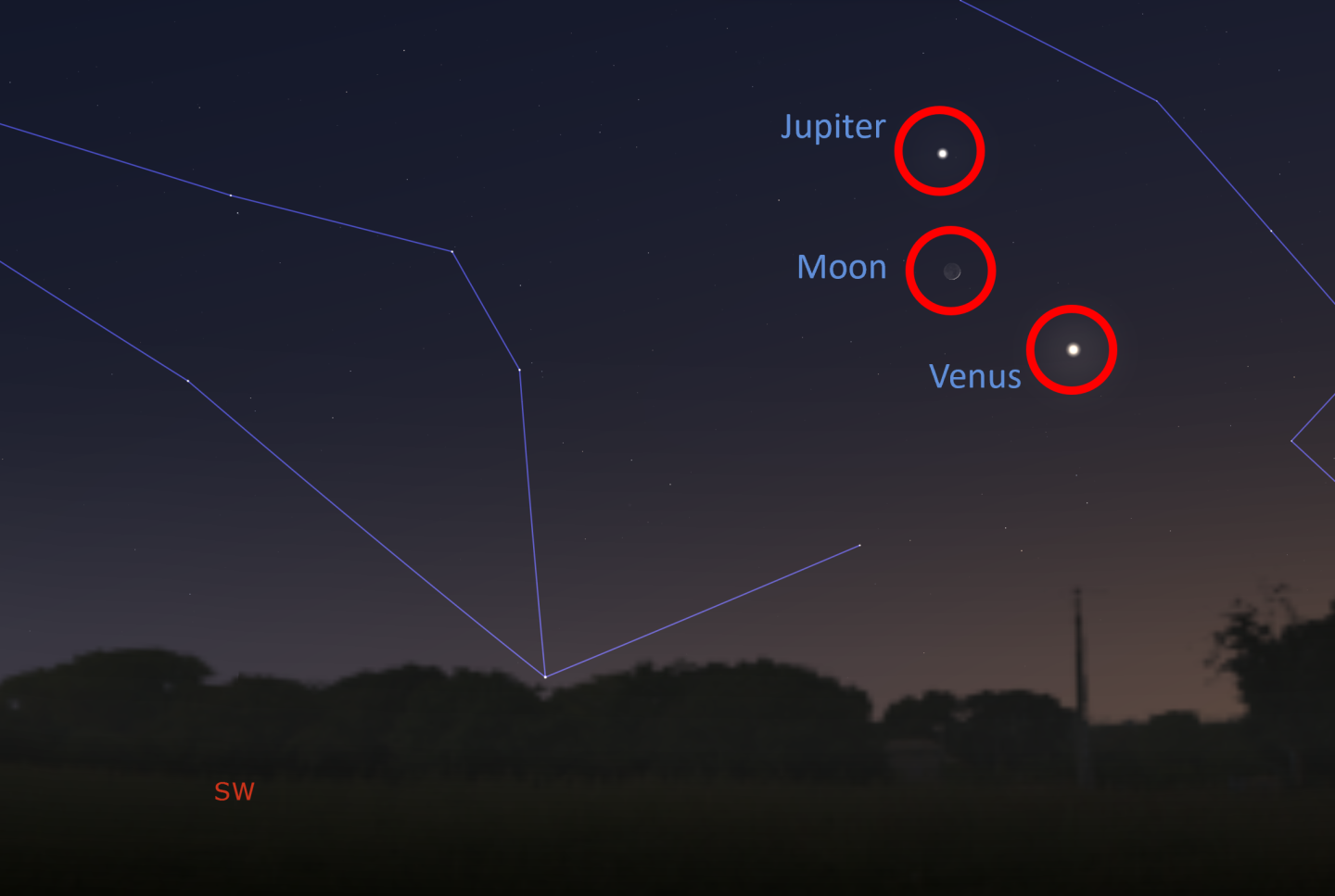
Then, on 27 February, Mars and the Moon will appear to be near each other in the south. They will be at their highest point in the sky at around 19:00 but they will be visible until 2:00 in the morning.
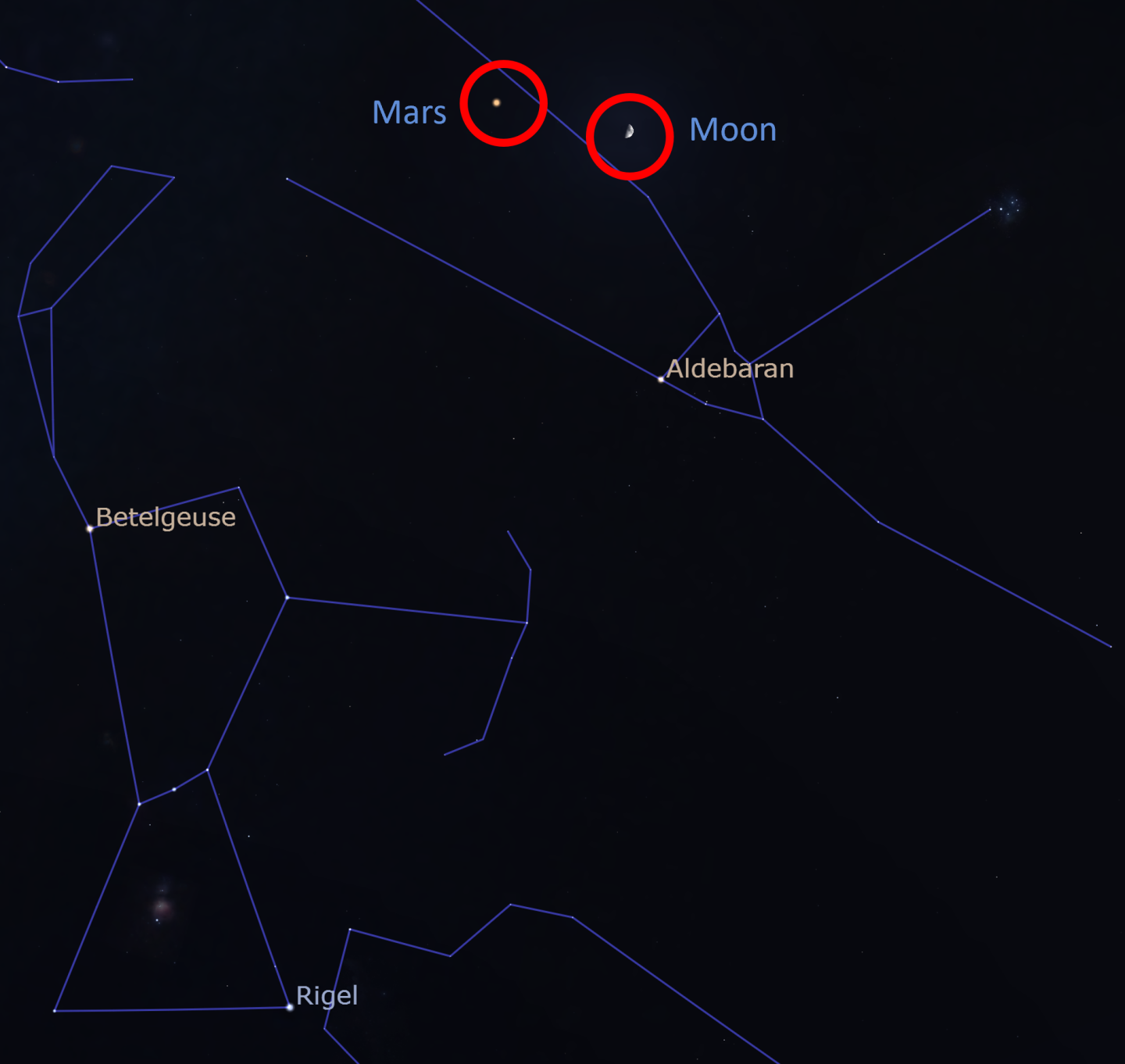
Venus and Jupiter will also appear to approach each other on the evening of 28 February in the southwestern sky and will get to their closest point the next day.
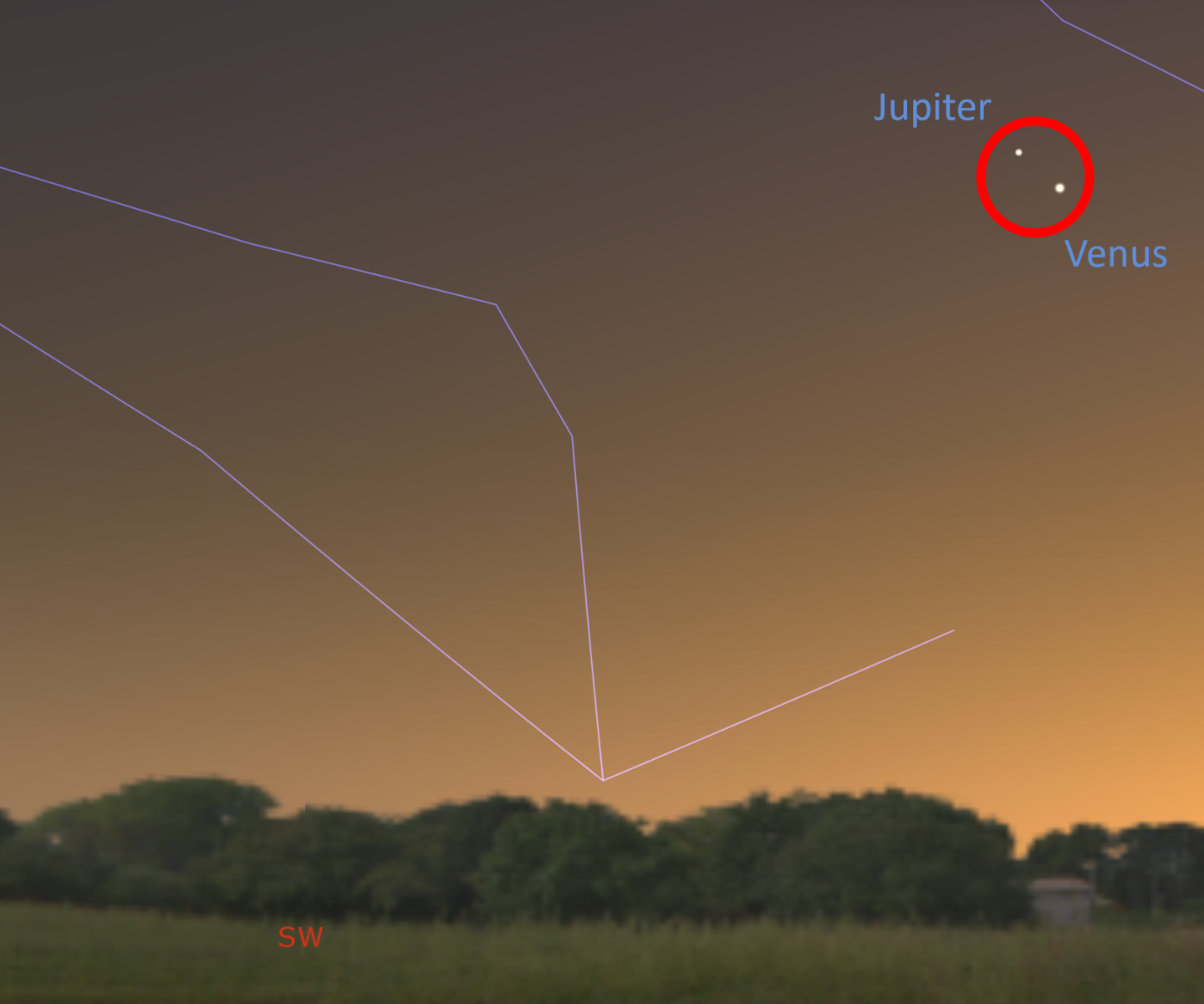
The Heart Nebula
As it’s February, we wanted to highlight a couple of Valentine's Day-related objects you can see in the sky this month. First up is the Heart Nebula located next to the constellation of Cassiopeia.
The Heart Nebula is popular with astrophotographers as cameras and filters can bring out colours that are otherwise too dim for the naked eye to see. You would find glowing ionized hydrogen, oxygen and sulfur gases, as well as dark dust lanes within this large nebula that covers four times that of the full moon.
An open star cluster known as Melotte 15 lies at the heart of the Heart Nebula. Stars within this cluster are very young – they’re only 1.5 million years old!
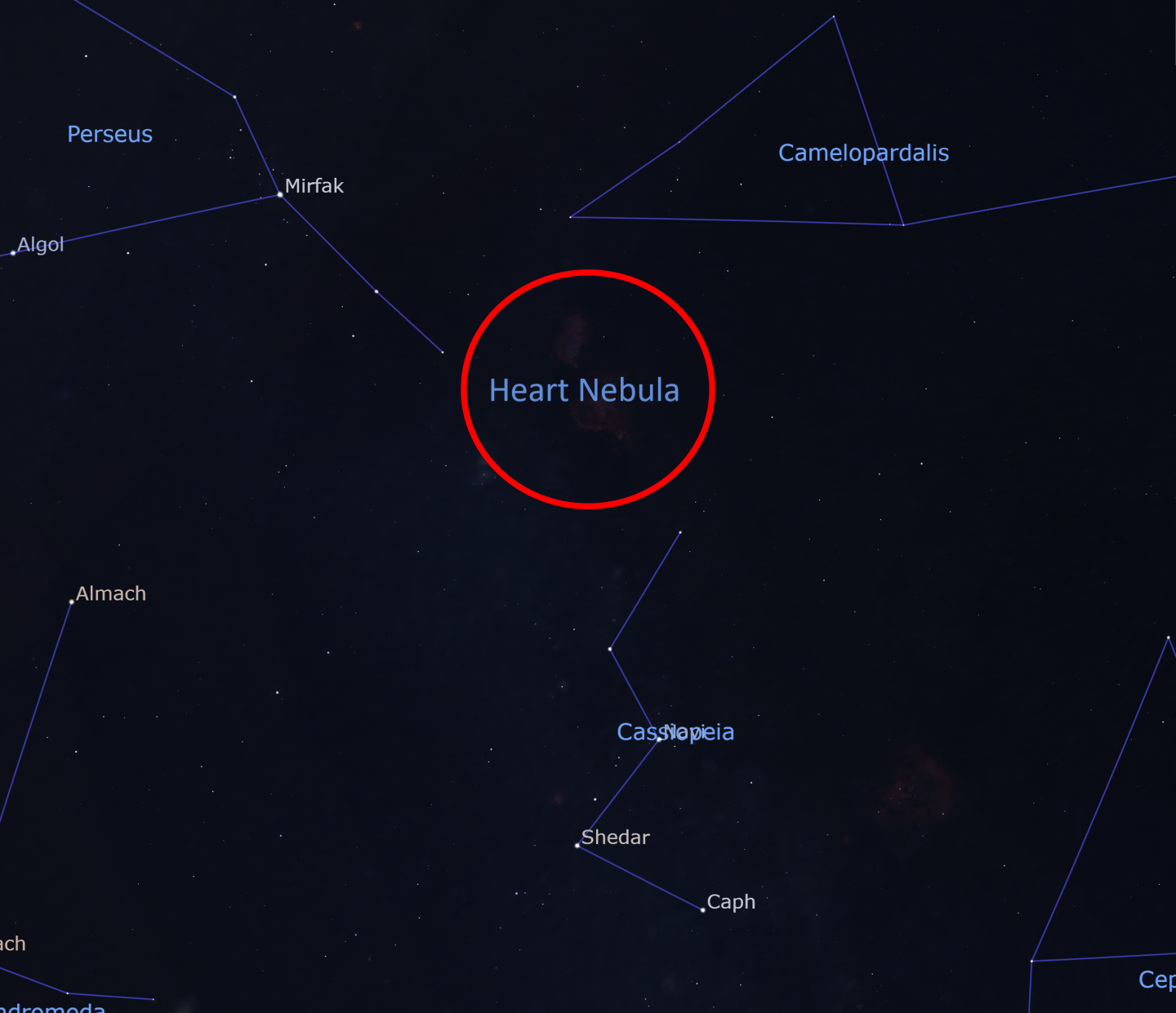
Love for the Southern Hemisphere - the Heart Shaped Cluster
Readers in the Southern Hemisphere can also look for the Heart Shaped Cluster which is found in the constellation of Monoceros the Unicorn and near Sirius, the brightest star in the night sky.
Most of the stars in this cluster are massive blue stars but it also contains a few cooler red giants. Binoculars can resolve at least a couple of the brightest stars in the Heart Shaped Cluster, but a telescope with an aperture of at least 6 inches will show dozens of stars that are arranged in a somewhat heart-shape, which gives the cluster its name.

Anti-Valentine's objects to find - Broken Heart Cluster and the Heart and Dagger Cluster
If for some reason you have had enough of love and relationships, then you might want to try and find the Broken Heart Cluster in Auriga instead, which is visible from both hemispheres.
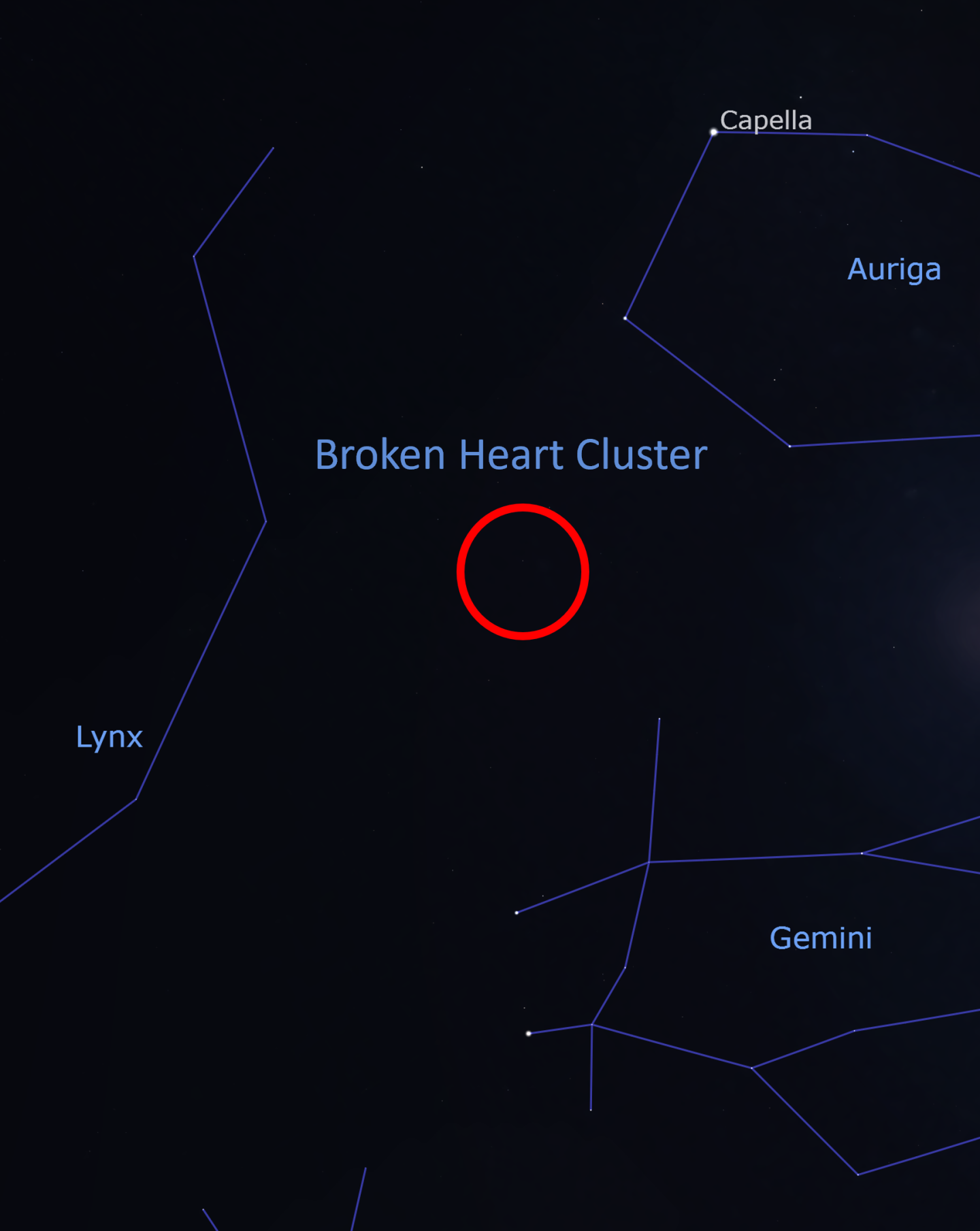
This is another open cluster located over 1700 light years away. Those south of the Equator can also look out for the Heart and Dagger Cluster that resembles a heart being stabbed by a knife. You can find it within the constellation Puppis.
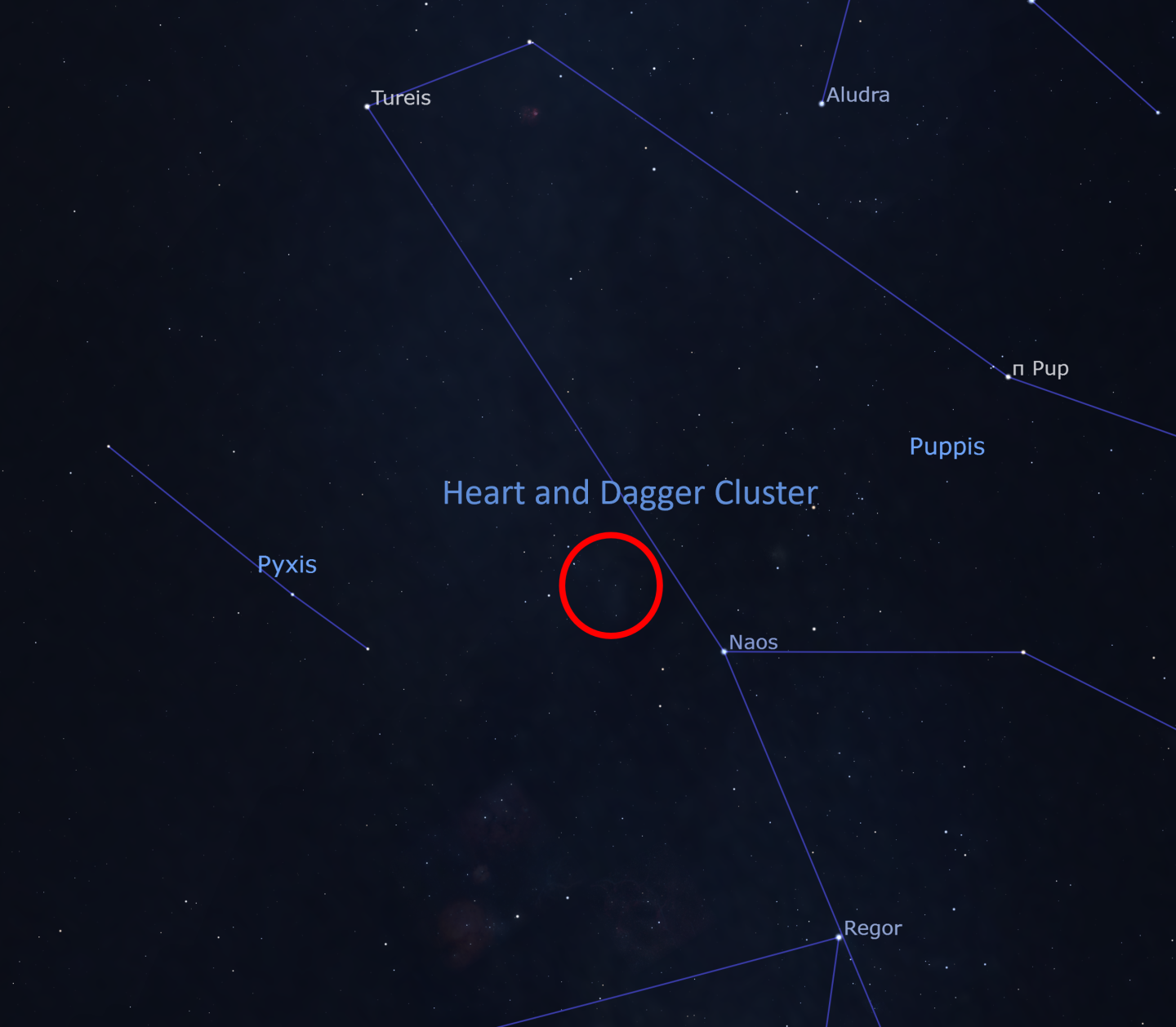
The Moon's phases this month
Full Moon – 5 February (18:28)
Last Quarter – 13 February (16:00)
New Moon – 20 February (07:05)
First Quarter – 27 February (08:05)
If you're a fan of the Moon, then see the winners and shortlisted images in the 'Our Moon' category of the 2022 Astronomy Photographer of the Year competition.
Stargazing Tips
- When looking at faint objects such as stars, nebulae, the Milky Way and other galaxies it is important to allow your eyes to adapt to the dark so that you can achieve better night vision.
- Allow 15 minutes for your eyes to become sensitive in the dark and remember not to look at your mobile phone or any other bright device when stargazing.
- If you're using a star app on your phone, switch on the red night vision mode.
See our range of observing equipment
Share your pictures
Do you have any images of the night sky? If so, why not share your photos via our Royal Observatory Astrophotography Facebook group.
You can also connect with us via Twitter: @ROGAstronomers
Main image: Heart Nebula © Shishir & Shashank Dholakia, Astronomy Photographer of the Year 2014
Never miss a shooting star
Be the first to hear space and astronomy news from the Royal Observatory Greenwich. Sign up to our space newsletter now.
Planetarium Shows
Join us for live planetarium shows





